There was a time when glasses were used to protect your eyesight from pollution, to style your outfit, or to correct your vision. But that changed when Philips introduced the first pair of smart glasses in 2004. Glasses were no longer an add-on for your outfit or protection for your eyes; the integration of technology changed the very use of eyeglasses.
And then came Google Glass, which was launched in 2013 and came with speech recognition, a camera, and internet connectivity. While the product itself failed, the idea laid the foundation for future generations of smart glasses.
With AI technology continuously evolving, smart glasses in 2025 are one of the most interesting innovations in wearable technology. They are more than just your regular eyewear. They are also your mobile phone, camera, and AI assistant. It won’t be far off to say that they are the future of technology and eyewear.
The industry is at the very beginning of its expansion. Many companies, such as Google and Meta, have come forward with new and updated versions of smart glasses. At the start of 2025, EssilorLuxottica released a statement announcing its plans to expand the production of Meta’s Ray-Ban smart glasses by 10 million units in 2026 (Reuters).
So it goes without saying, tech glasses are about to become a household gadget very soon. So here is everything you need to know about smart glasses in 2025.
What are Smart Glasses and How They Came to Be?
Smart glasses have their origin in a small book published in 1935, called “Pygmalion’s Spectacles, by Stanley G. Weinbaum.” The book spoke of a headset-like device that would immerse all five senses in a virtual world. And that pretty much is the concept behind the invention of smart glasses.
But the first wearable head-mounted display was created by computer scientist Ivan Sutherland in 1968. This heavy, ceiling-suspended device laid the foundation for what we today call smart glasses.
Throughout the 70s and 80s, the U.S. Air Force used helmet-mounted displays to project data directly into the pilot’s field of vision. This demonstrated the practical application of wearable displays in a professional setting.
In the late 1980s, Reflection Technology’s “Private Eye” was an early attempt at a consumer-grade wearable display, albeit one that only showed monochrome text.
Then came 2004, when Philips came out and announced the first ever smart glasses that were available for sale. While the technology was intriguing, it couldn’t captivate the general population. Another attempt was made by Google in 2013, which was a failure as well.
But they laid out the future of AR technology, which eventually led to Meta-RayBan, which was launched on Sept 3, 2023.
Now that we know what smart glasses are, let’s try to understand the technology behind smart glasses in 2025.
Technology Used in Smart Glasses in 2025
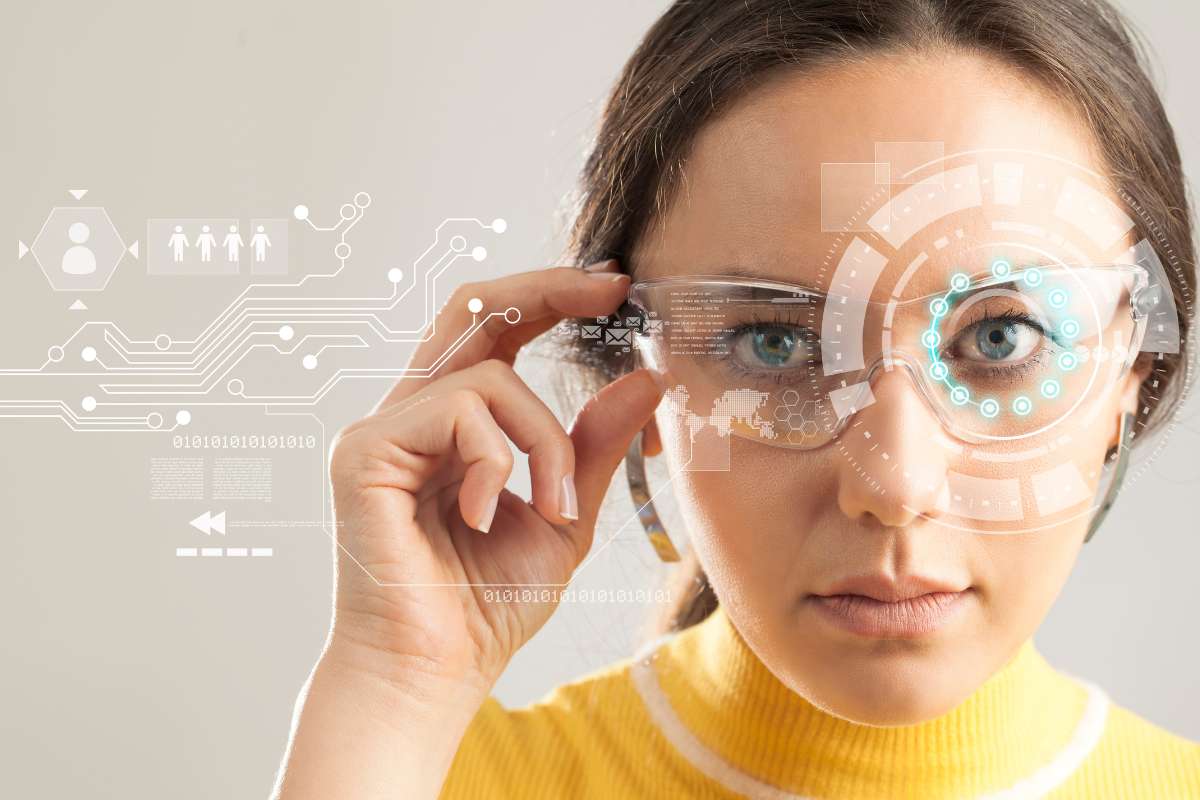
Smart glasses are a combination of various advanced technologies. While some of these features and techs depend on the version and brand of the glasses you buy.
But here are some of the technologies used in smart glasses:
1. Display Technology:
Most of the modern tech glasses come with miniature displays or waveguide optic visuals directly onto the user’s field of vision. Think of them as your computer screen, but in a really small size. Most manufacturers use OLED or Liquid Crystal on Silicon (LCoS) for manufacturing these displays. One of the main purposes of these displays is to give users an augmented reality experience without VR headsets.
Also Read :- Revolutionizing Interaction: Understanding Human-Machine Interfaces
2. Camera and Sensors:
The cameras in the smart glasses serve a dual purpose. First of all, you can use them to click pictures and record videos, just like a regular camera. The second use of cameras on tech glasses is to recognize objects. This, when partnered with an AI assistant, can help guide blind people through their daily lives.
Also Read :- What Is the Best Security Camera Software in 2025?
3. Voice and Audio Tech:
While we are discussing AI assistants, let’s also talk about the technology used to give them a voice. Smart glasses come with bone-conduction audio speakers. So, instead of sending sound waves through your ears, tech glasses vibrate them through your bones. This helps hand-free interaction, voice commands, and communications.
4. Connectivity:
It goes without saying that tech glasses need the internet to serve their purpose. Smart glasses connect with Bluetooth, Wi-Fi, and 4G and 5G networks to sync with smartphones and cloud services.
5. Processing Units:
As I said before, smart glasses are just your smartphones without the weight and size. And just like smartphones, these glasses come with embedded processors, such as the Qualcomm Snapdragon AR1+ Gen 1, to handle and optimize the applications, systems, and computing tasks.
6. Augmented Reality (AR) Software:
One of the biggest selling points of smart glasses is their AR experience. Currently, there are two AR frameworks that are integrated with tech glasses, i.e., ARCore by Google and ARKit by Apple. These two support real-time overlays and interactive visuals.
Also Read : – Embracing the Future: The Evolution and Impact of Wearable Technology
Now that you know the technology behind these glasses, let’s take a look at some of the most popular smart glasses in 2025.
Top 5 Smart Glasses In The Market
1. Meta Ray-Ban:
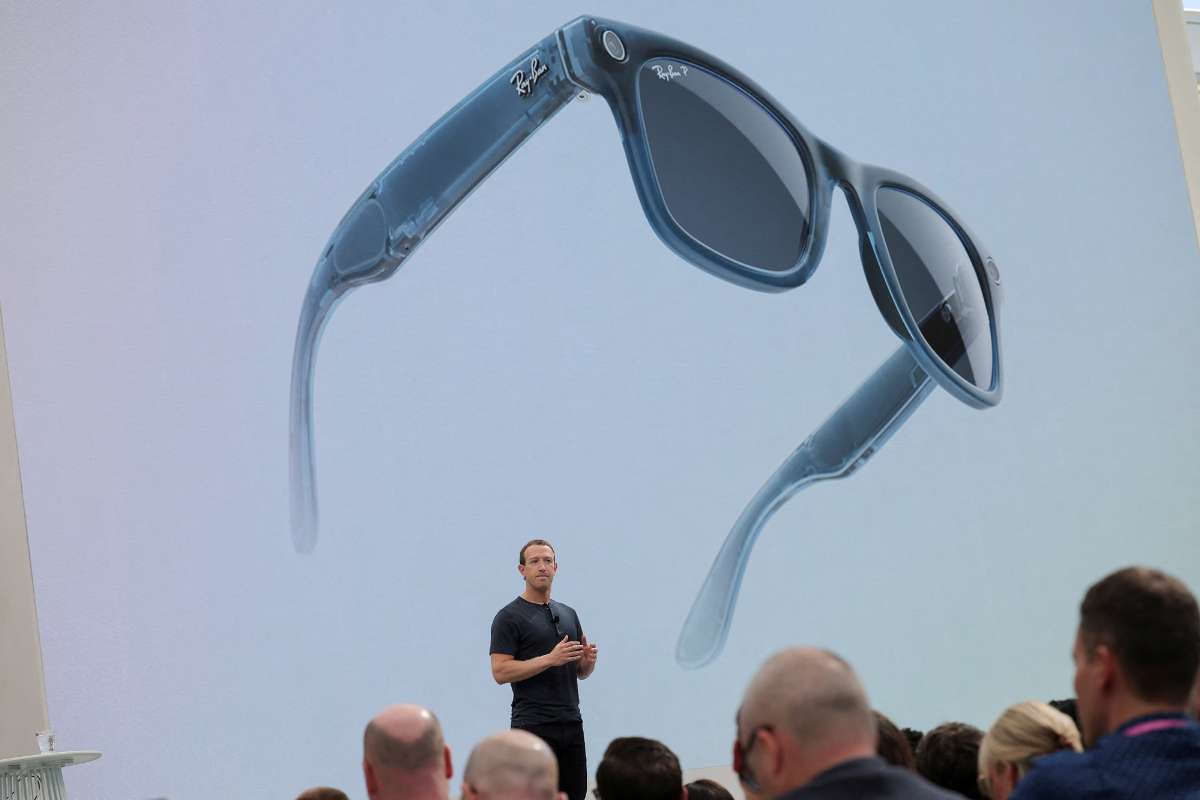
In 2019, Meta teamed up with EssilorLuxottica and brought to us one of the most popular gadgets in recent years. Meta glasses blend the advanced technology of the Meta platform with the classy look that Ray-Ban is popular for. These glasses are not just designed to look like your conventional designer glasses, but also offer hands-free AR experiences.
- Key Features: Hands-Free Capture, Immersive Audio, Meta AI, Hands-Free Communication
- Price: $299 to $379
- Product Link: https://www.meta.com/in/ai-glasses/ray-ban-meta/
2. XREAL One Pro:
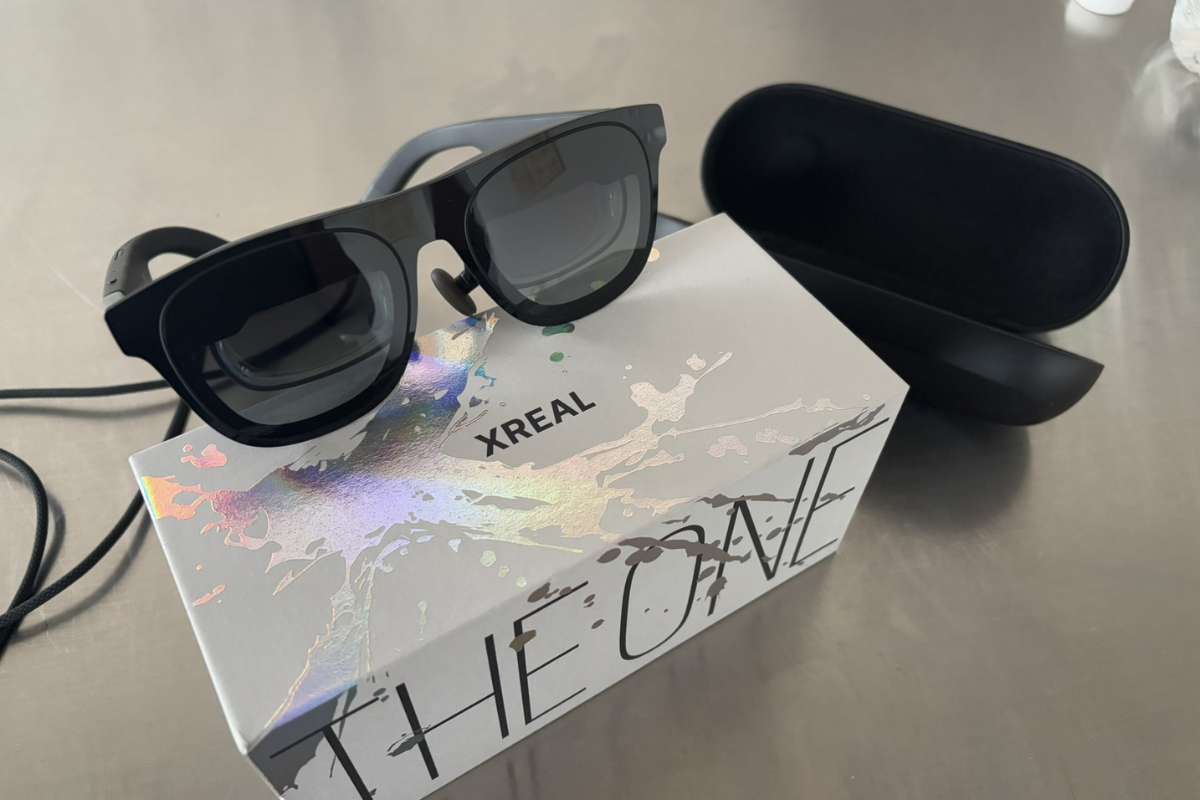
XREAL One Pro is the successor of the original XREAL One glasses. They are one of the best smart glasses in 2025. They are famous for their large, private virtual screen for watching movies, playing games, and working. Their high-quality displays, wide field of view, and native 3DoF tracking make it a compelling option for those seeking a premium augmented reality experience.
- Key Features: 57-degree field of view, two Sony Micro-OLED displays, built-in X1 spatial computing chip, lightweight camera.
- Price: $649
- Product Link: https://us.shop.xreal.com/products/xreal-one-pro?srsltid=AfmBOooZgyxSkLKbhELug0mM-63sh9brll5wnO-ys_srL78Y81hLvp8x
3. Rokid Max 2:

Rokid Max 2 is a lightweight pair of glasses with augmented reality tech that is made for entertainment and productivity. They are wearable displays that can be used as a second screen for your laptop, to watch movies, and even play games. These glasses create a large screen that is perfect for work and entertainment.
- Key Features: two Micro-OLED displays, 50-degree field of view, Myopia Adjustment, Rokid Station 2
- Price: $399 to $529
- Product Link: https://global.rokid.com/products/rokid-max-2-ar-glasses?srsltid=AfmBOophIUeAr3adKfnysssmYqP57eExbhUS5bEVdya5Pa_FFgHnUY_T
4. Viture Pro XR Glasses:
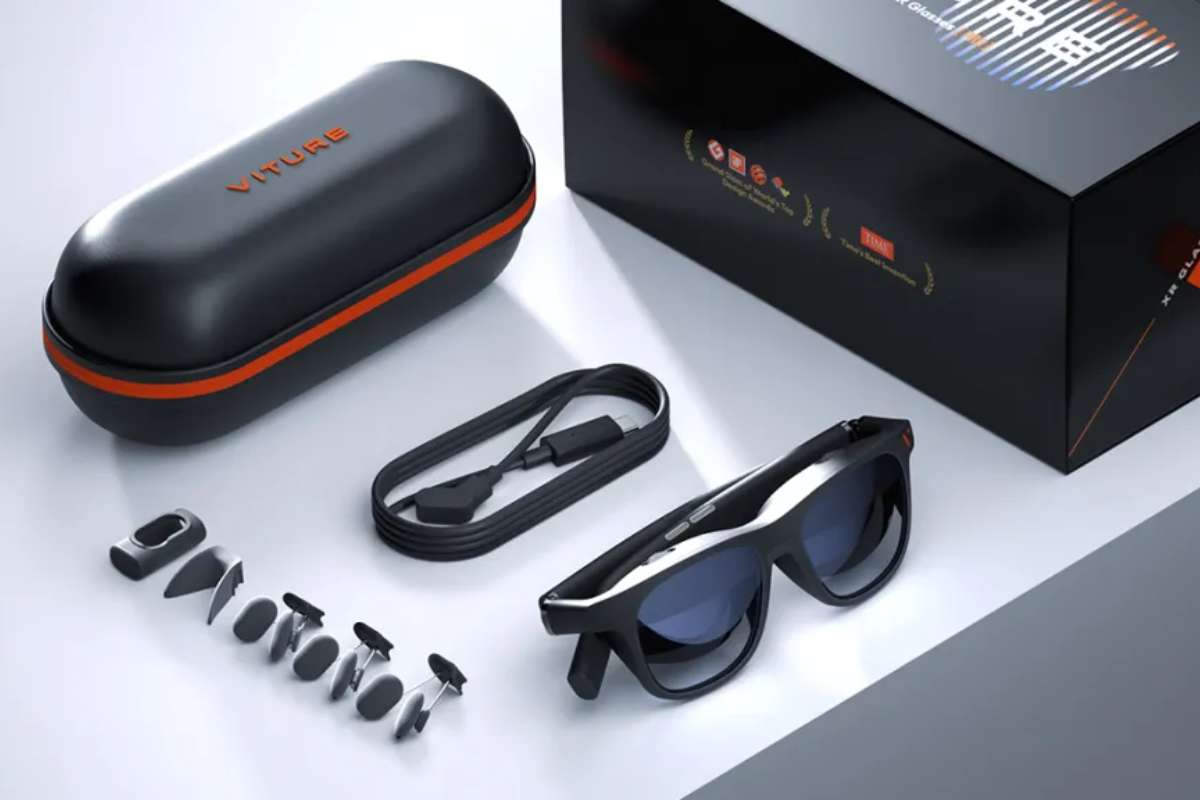
Viture Pro XR is the perfect blend of style and technology. They are designed with three things in mind, i.e., gaming, entertainment, and productivity. Not only do they act as a protection to your eyes, but you can also use them as a handheld console and multi-screen workspace.
- Key Features: 135-inch virtual screen, Micro-OLED display, Electrochromic Film
- Price: $459 to $500
- Product Link: https://www.viture.com/
5. RayNeo Air 3S:
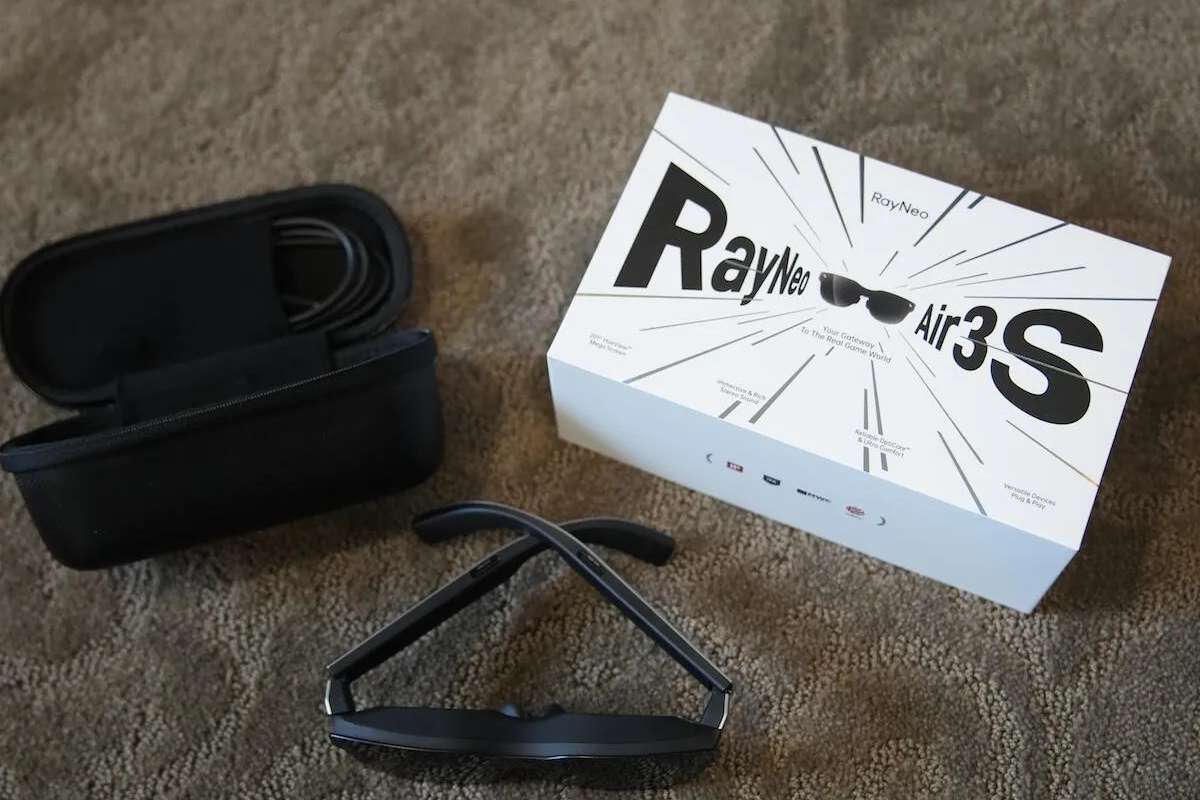
Think of RayNeo Air 3S as your personal monitor that you can carry everywhere, because that’s exactly what they are. These glasses are designed to give you a large-screen viewing experience of your digital content. They are one of the best gadgets you can buy and also one of the cheapest smart glasses in 2025.
- Key Features: micro-OLED displays,201-inch display, refresh rate of up to 120 Hz, “OptiCare” technology
- Price: $205 to $225
- Product Link: https://www.rayneo.com/products/rayneo-air-3s-xr-glasses?srsltid=AfmBOoobGoINfUo-Mtt8G-cMQOmKHLI5GFxBdFtu5qTPF32zWbBkJYZu
Advantages & Disadvantages of Smart Glasses
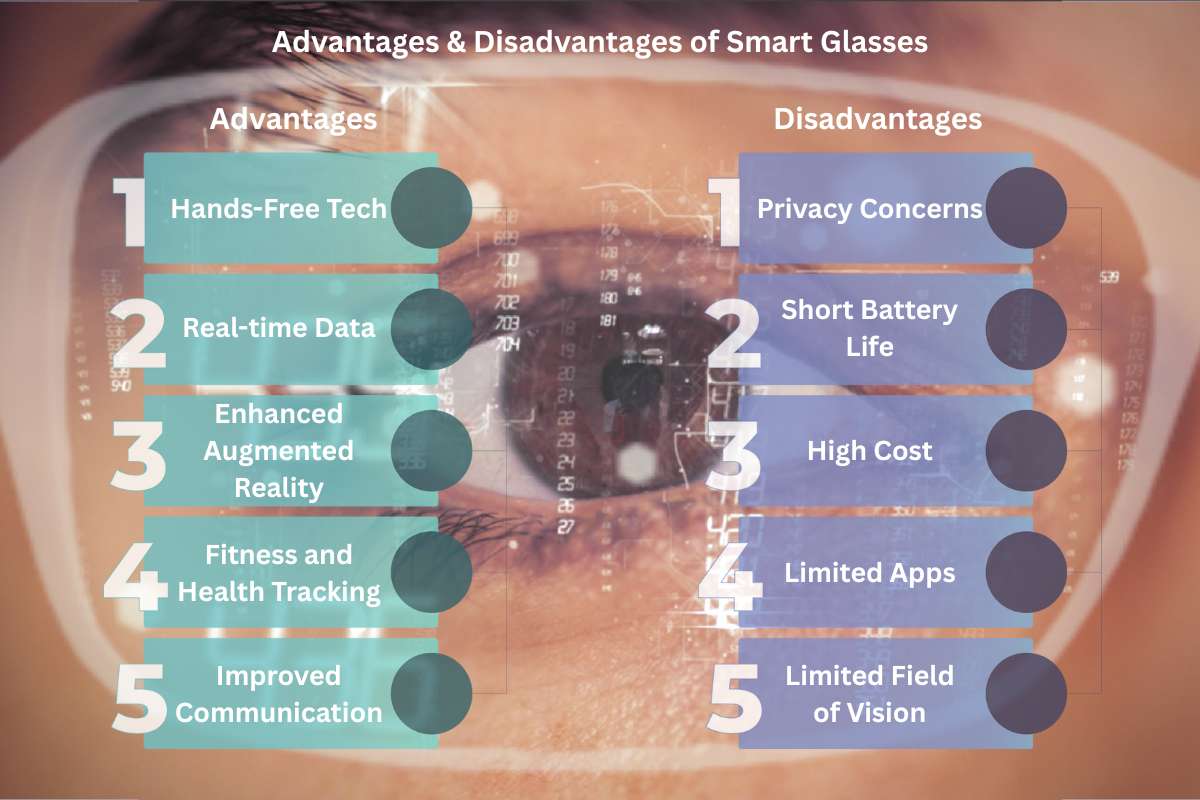
Here is a quick list of the benefits and drawbacks of smart glasses.
| Advantages | Disadvantages |
| Hands-Free Tech | Privacy Concerns |
| Real-time Data | Short Battery Life |
| Enhanced Augmented Reality | High Cost |
| Fitness and Health Tracking | Limited Apps |
| Improved Communication | Limited Field of Vision |
Advantages of Smart Glasses in 2025
1. Hands-free Tech:
Smart glasses allow their user to take pictures, answer a call, and access information such as maps without holding them or clicking on any buttons. This can be very useful for someone who has to multitask or is always on the road for work.
2. Real-time Data:
Smart glasses in 2025 are perfect for accessing real-time information and data. They offer instant access to information such as translations, maps, and messages. Not only is it helpful for tourists and businessmen traveling to other countries, but it also increases your situational awareness as well as productivity.
3. Enhanced Augmented Reality:
One of the greatest uses of smart glasses in 2025 is for their AR features. These features are useful in various industries that require the repair and assembly of machinery. In the medical industry, smart glasses can give doctors direct access to patients’ medical reports and their medical scans. In education, smart glasses can allow students and trainees to interact with visual content layered over physical objects. This can help in simplifying many hard-to-understand topics and subject matters.
4. Fitness and Health Tracking:
Smart glasses, just like smart watches, can track your health and fitness. They do this by keeping track of your daily activity levels, eye movements, and posture. This gives you direct access to your growth and progress, which gives you access to where you are doing well and where you are lacking.
5. Improved Communication:
This is one of the best features of smart glasses in 2025. With the help of voice assistants and video capabilities, you can communicate immediately and more efficiently. And their real-time translation software can come in handy when you visit a city that doesn’t speak the same language as you.
Disadvantages of Smart Glasses in 2025
1. Privacy Concerns:
The existence of smart glasses raises a big question about our privacy. In early 2025, a New Orleans attacker used Meta glasses to monitor the area before the incident (NBC News). In 2024, two Harvard students demonstrated that smart glasses can be paired with face recognition software and used to access information about strangers (Forbes). But manufacturers, such as Meta, have tried to come up with solutions such as LED indicators to alert people about camera activity.
2. Short Battery Life:
One of the biggest issues with tech glasses is their battery life. When you try to fit so many features, such as sensors, displays, and AI assistants, in such a small space, it can consume a lot of energy. Even Meta’s Ray-Ban, which were the best-selling tech glasses in 2024 according to Counterpoint Research, only worked for 4 hours on a single charge. This short lifespan of the battery can create a number of issues for you, essentially limiting its long-term use.
3. High Cost:
Smart glasses are expensive. Even the cheapest smart glasses in 2025, RayNeo Air 3s, cost somewhere between $269 and $379. And if you try to buy something cheaper, they will have the basic features such as Bluetooth connectivity and call support. As good as these specs are, they will be very expensive for your pockets.
4. Limited Apps:
If you buy smart glasses, keep in mind that you are basically buying the most basic smartphone. Unlike smartphones, you cannot choose or download many apps into your smart glasses. They are designed for very general use and have apps to accommodate only the necessary features, such as camera, maps, and Wi-Fi connectivity.
5. Limited Field of Vision:
Unlike AR headsets, smart glasses have a very narrow field of view. The area where the AR visual appears is very small, mostly in a small rectangle in the lower corner of your glasses. Not only does it ruin the AR experience, but it can also be irritating to your vision. And it also reduces the effectiveness of many AR features, such as 3D modeling and map visuals.
Conclusion:
Smart glasses have changed a lot. They were once a failed idea. Now, they are a new type of computer that mixes the digital world with the real one. They give you hands-free tools for work and play. You can enjoy better productivity and augmented reality.
They are not perfect. Privacy is still a big worry. The battery does not last long. They also cost a lot. As AI and hardware improve, smart glasses will fit more easily into daily life. Buying them today depends on what you need and if you are ready for both the good and the bad.
FAQs
1. Do smart glasses need Wi-Fi?
While smart glasses don’t need Wi-Fi for basic tasks, such as displaying stored data or capturing photos, you do need Wi-Fi to upload data, sync your devices, use navigation apps, and other cloud services.
2. Are smart glasses safe?
Smart glasses are generally safe to use. They do not emit any radiation, nor do they harm your eyesight.
3. Can smart glasses take pictures?
Yes, most smart glasses come with built-in cameras that can take pictures as well as record videos for you.






